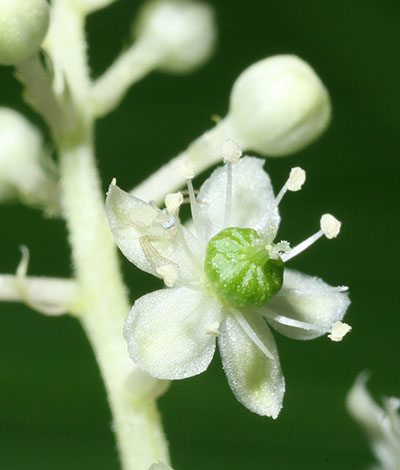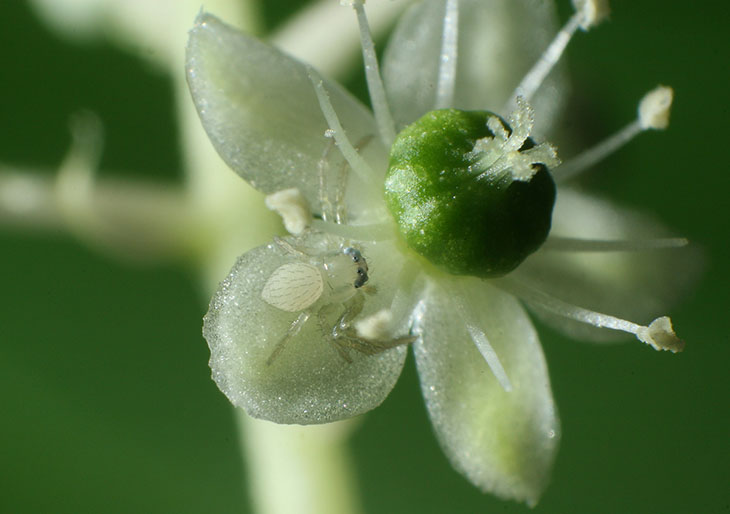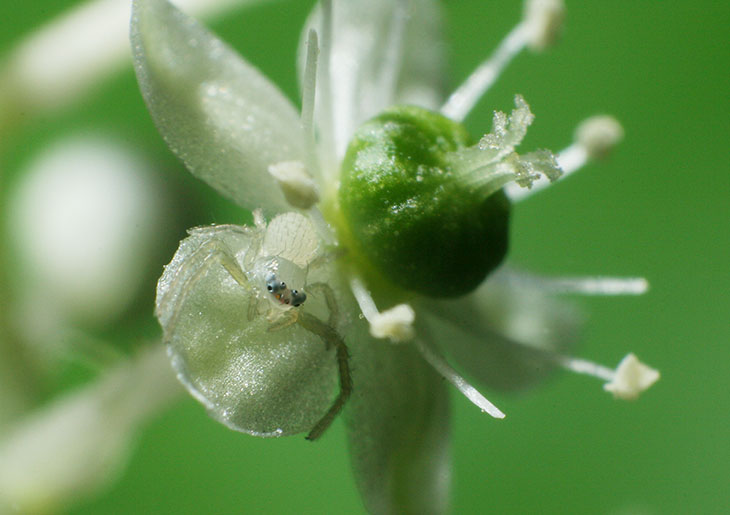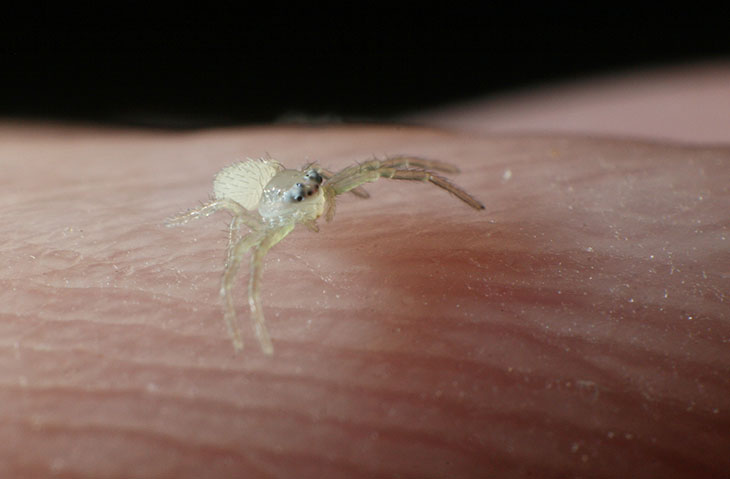
Courtesy of Jim over at the Kansas branch of the blog comes this shot, taken while I have been trying to locate any resident mantis here for the last two weeks. I’m going to assume this is also a Chinese mantis (Tenodera aridifolia sinensis) having captured a white-lined sphinx moth (Hyles lineata.) Moth and butterflies are notorious for losing both wing scales and body ‘fur’ when captured, often liberally coating their predators as seen here. It’s easy to tell this was a night shot by the dark eyes of the mantis, and the fact that sphinx moths are largely nocturnal. What’s not easy to tell is how big both of these are – sphinx moths are among the largest in North America, and this is the final instar, or reproducing adult phase, of the mantis. That means the frame of this image probably spans more than 8 cm, with the mantis running somewhere in the vicinity of 10-13cm in body length, and the wingspan of the moth around 6-9 cm.
 I, meanwhile, went in the opposite direction yesterday. On what I’m pretty sure is a pokeweed plant (Phytolacca americana, the subject of the dried berry images here,) I went in close to photograph the stage where the berries are starting to develop from the fertilized blossoms – which is encouraging, since I’ve been seeing too few pollinators in this yard. After unloading the memory card, I noticed something that wasn’t visible to me when I took the frames, so I had to go back out and do some more detail shots. In my defense, the entire flower is 7mm across petal to petal, about the diameter of a standard pencil, so you can judge the size of the occupant yourself.
I, meanwhile, went in the opposite direction yesterday. On what I’m pretty sure is a pokeweed plant (Phytolacca americana, the subject of the dried berry images here,) I went in close to photograph the stage where the berries are starting to develop from the fertilized blossoms – which is encouraging, since I’ve been seeing too few pollinators in this yard. After unloading the memory card, I noticed something that wasn’t visible to me when I took the frames, so I had to go back out and do some more detail shots. In my defense, the entire flower is 7mm across petal to petal, about the diameter of a standard pencil, so you can judge the size of the occupant yourself.
This is a crab spider, family Thomisidae, likely genus Mecaphesa based on the guide found on this page – beyond that I can’t say, since this is likely a juvenile and the coloration of even adults can vary significantly. But let’s get a little bit closer look.

It was cooperative enough to give me a couple of different poses, I’m guessing to show off that lovely blue eye shadow – obviously trying to look older than it really is, so I’m guessing this is late adolescence, which would make it more mature than Republicans in this country. But that isn’t saying much.

I need to find a different flash bracket; it doesn’t matter which side I decide to mount the strobe on, it ends up being the wrong side for a particular subject soon after, and switching isn’t easy. I have the ability to mount two strobes simultaneously and could switch power between them, but that would be even bulkier (something I’d rather reduce right now) and considerably more difficult to handle. The ability to swap the strobe left for right in a pinch would be ideal. Stay tuned; I’ll work this out eventually.

When I tried to slip my finger behind the flower for a scale shot, the spider panicked and dropped off the petal, dangling beneath from a strand of web. I grabbed this and lifted the spider back over the flowers to try and redeposit it in place, and it scampered back up the web to run across my fingers. Here it paused in the foothills where my fingerprints gave way to the coastal plain of the back of my hand.
Soon afterward, I coaxed it back onto the flowers and will be watching for it later on. Maybe it’ll serve as the test subject for my new flash bracket setup soon.



















































